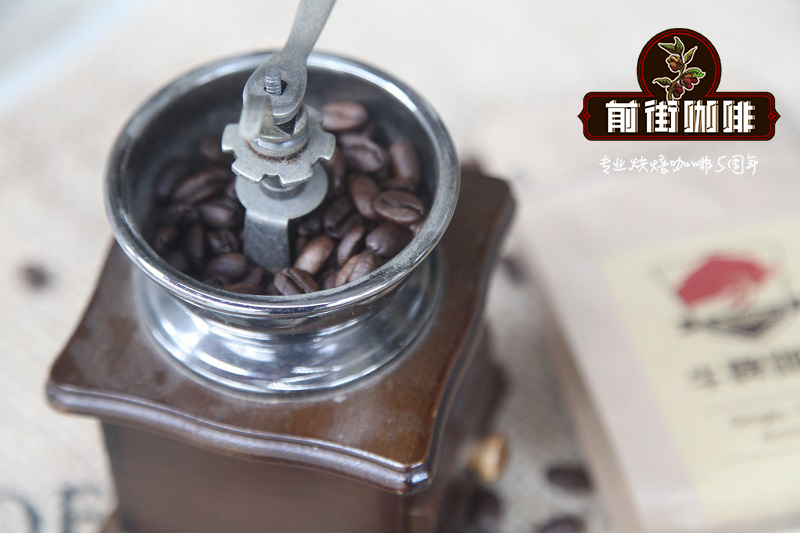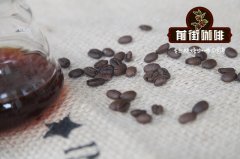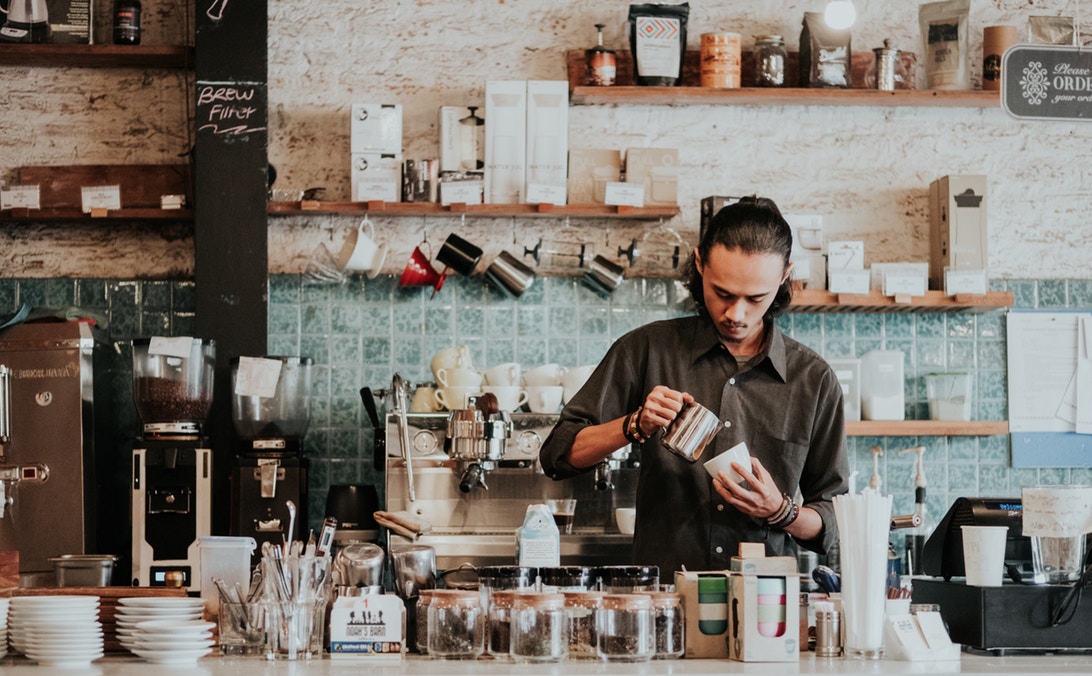How can coffee beans be roasted? how do you define how coffee beans are roasted?

Professional coffee knowledge exchange more coffee bean information please follow the coffee workshop (Wechat official account cafe_style)
For any bean, of course, there can be different flavors according to different degrees from light to deep roasting, but on the other hand, a cup of coffee has only one roasting degree. Boutique coffee represents the flavor of a producing area, and what you want to drink is the unique flavor formed by that producing area. For example, Africa is characterized by acid, while Yega Xuefei is characterized by citric acid, so that for the baker, it is the duty to bake the bean with this flavor, so that the person who drinks the coffee can identify the beans from which region it is after drinking this cup of coffee. And this is the baking logic of front street coffee.
Know every cup of coffee, start with every coffee bean, when you stand in front of the coffee counter, how do you choose coffee beans? "smell, see, peel" are the three judgment steps we provide, which can let you know whether the coffee beans are fresh and the varieties of coffee beans. If you have accumulated some experience in watching coffee, you can also judge which coffee beans are included in each "mixed coffee".
First, when studying the roasting degree of coffee, the degree of roasting can be judged by sound, color and aroma.
Its color from light gray to dark brown, aroma from light and elegant gradually rich; the sound is issued twice burst sound, for example, heat-resistant raw beans, about 7 points began the first explosion, lasting about 2 minutes, its voice is low, indicating the beginning of pyrolysis, starch into caramel, water evaporation, exhaust, around 12 minutes issued a second explosion, the sound is violent and sharp, indicating that the cell fiber is broken, the deeper the baking.
Second, the famous American Fine Coffee Association (SCAA) promotes the determination of the baking degree by the caramelization analysis value (Agtron number) determined by the red inside. the higher the value, the lower the caramelization, the grayish color, and the lighter the baking. on the contrary, the low value represents the high caramelization, black and bright color, and the deeper the baking.
Third, the well-known roasting degree of coffee is the American term shallow roasting, medium roasting, deep (heavy) roasting, which can be subdivided into eight stages, and the differences in roasting degree vary with different regions. The following briefly introduces the roasting degree and flavor of coffee:
(1) Light Roast: very shallow baking, also known as "shallow baking"
Time to drop beans: before and after the start of the explosion
Wind taste: bean table is light cinnamon color, with a strong grass flavor, taste and aroma is not enough, generally used for experiments, rarely used for tasting.
(2) Cinnamon Roast: shallow baking, also known as cinnamon baking
Time to drop beans: an explosion begins to be dense.
Wind taste: the bean surface is cinnamon color, at this time the smell of grass has been removed, strong acidity, slightly fragrant, often used to make American coffee.
(3) Medium Roast: medium baking, also known as "micro baking"
Time to drop beans: from the explosion to the end
Wind taste: the bean surface is chestnut color, light taste, slightly sour with bitter, moderate aroma, retain the original flavor of coffee beans, often used as American coffee or mixed coffee.
(4) High Roast: moderate micro-deep baking, also known as "concentration baking"
Time to drop beans: the end of the first burst
Wind taste: the bean surface is light reddish brown, the taste is refreshing and rich, the sour and bitter balance is not irritating, and it is slightly sweet, with good aroma and flavor. Blue Mountain and Gillimazaro coffee are suitable for this roasting degree and are loved by people in Japan and Central and Northern Europe.
(5) City Roast: medium-depth baking, also known as "urban baking"
The time to drop the beans: after the first burst, that is, between the first and second bursts.
Wind taste: the bean surface is light brown, the taste is bright and lively, the sour and bitter balance is light, and it releases the high-quality flavor of the coffee, which is the standard baking degree and the public's favorite roasting degree. Brazilian and Colombian coffee are suitable for this roasting degree and are often used in French coffee.
(6) Full City Roast: micro-depth baking, namely deep baking, also known as "deep city baking"
Time to drop the beans: the second burst
Wind taste: the bean surface is brown, the taste is calm and full, the bitter taste is strong, the aftertaste is sweet, the aroma is full, it is a Central and South American baking method, and more iced coffee and black coffee are used.
(7) French Roast: very deep baking, also known as "French baking"
Time to drop beans: the second explosion is dense to the end of the second explosion.
Wind taste: the bean surface is dark brown and black, strong taste, bitter taste, sour taste almost no feeling, with rich chocolate and smoky aroma, for Europe by the most popular in France, more coffee Oulei, Viennese coffee.
(8) Italian Roast: extremely deep baking, also known as "semantic baking"
Time to drop the bean: the second explosion ends until the bean surface turns black and produces oil.
Wind taste: the bean surface is black and glossy. Before carbonation, the coffee bean fiber has a strong, complex, bitter taste, with strong roasting and scorching aroma. It is mainly popular in Latin countries and Italy. It is often used as Italian coffee Espresso.
Important Notice :
前街咖啡 FrontStreet Coffee has moved to new addredd:
FrontStreet Coffee Address: 315,Donghua East Road,GuangZhou
Tel:020 38364473
- Prev

Coffee roasting light, medium, deep coffee beans, which you can drink the difference?
Professional coffee knowledge exchange more coffee bean information please follow the coffee workshop (Wechat official account cafe_style)
- Next

What is the real meaning of the third wave of coffee? What's the difference from boutique coffee?
Professional coffee knowledge exchange more coffee bean information Please follow the coffee workshop (Wechat official account cafe_style) now often hear the term "the third wave of coffee" in shops or on the Internet, but do you know the real meaning of the third wave? What's the difference between the third wave and boutique coffee? What do you mean by the first wave, the second wave or even the fourth wave? It is necessary to clearly define
Related
- Beginners will see the "Coffee pull flower" guide!
- What is the difference between ice blog purified milk and ordinary milk coffee?
- Why is the Philippines the largest producer of crops in Liberia?
- For coffee extraction, should the fine powder be retained?
- How does extracted espresso fill pressed powder? How much strength does it take to press the powder?
- How to make jasmine cold extract coffee? Is the jasmine + latte good?
- Will this little toy really make the coffee taste better? How does Lily Drip affect coffee extraction?
- Will the action of slapping the filter cup also affect coffee extraction?
- What's the difference between powder-to-water ratio and powder-to-liquid ratio?
- What is the Ethiopian local species? What does it have to do with Heirloom native species?

